Overview of types and varieties of lavender
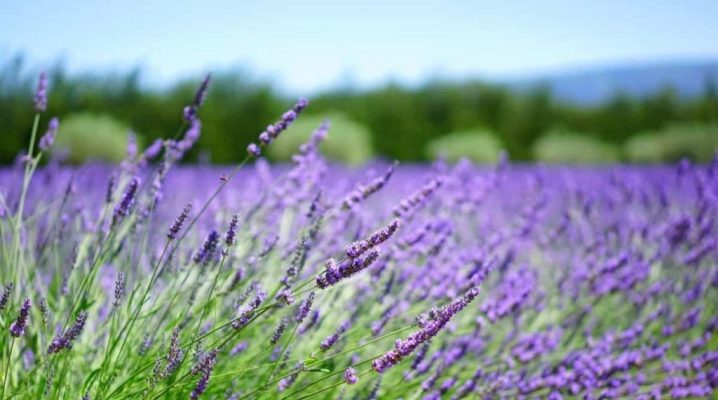
Lavender is a very famous and widespread perennial evergreen undersized plant that conquers with its elegance and wonderful aroma. It is a semi-shrub or shrub of the Lamiaceae family, a spicy medicinal plant popular for its medicinal properties. Lavender attracts attention not only with purple flowers, but also with a tart scent, which often becomes the main participant in incredible perfume compositions and essential oils.
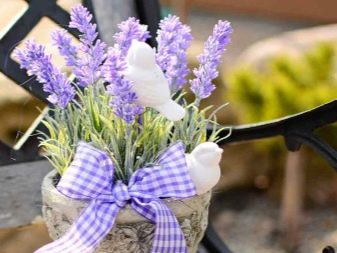
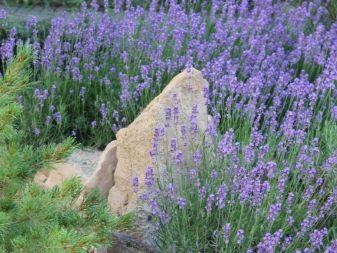
Main varieties
In addition to being incredibly beautiful and pleasing to the eye, lavender is also used in a wide variety of industries. In this regard, a fairly large number of countries are considered regular suppliers of lavender. For example, in France, in the province of Provence, this plant acts as a kind of visiting card, because 80% of the total volume of lavender in the world is grown here in the fields.
Lavender oil has been used since ancient times to treat various diseases, and lavender flower tea is an excellent remedy for headaches (for example, the Blue Fairy variety).
A pleasant aroma makes lavender in demand among perfumery and cosmetics manufacturers.
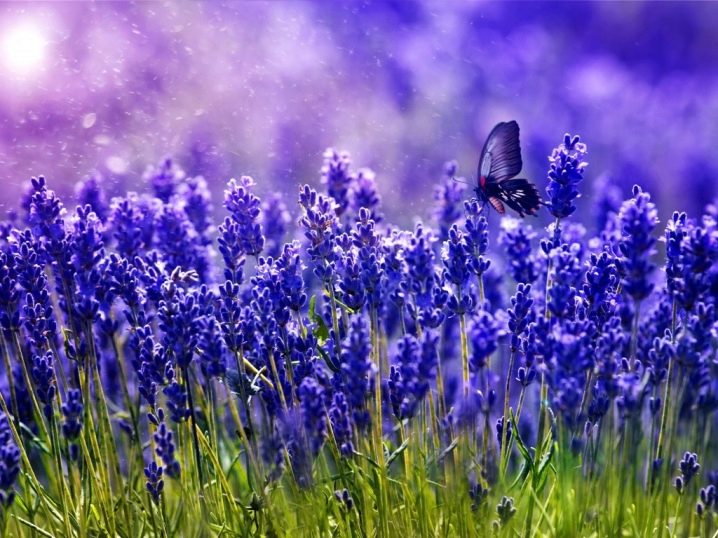
It is known that lavender is capable of blooming only in places with a warm climate, and cannot survive in severe winters. However, experienced breeders were able to adapt such a whimsical plant to the Russian weather, so it grows without problems in the gardens and in the backyards of our compatriots.
There are approximately 25 to 30 species in the genus, of which only two are those that are suitable for cultivation. Their names are narrow-leaved and broad-leaved lavender. Many other varieties have been produced by breeders from these two varieties.
Now let's go directly to the description of each of the types and highlighting the differences between one and the other.
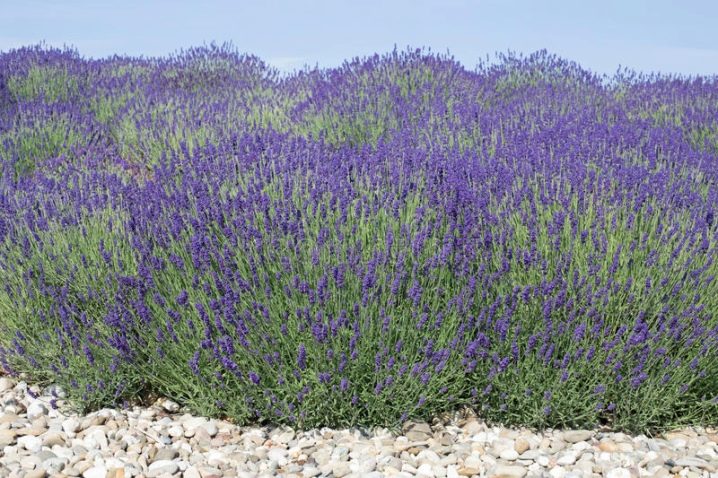
Toothed
This perennial shrub reaches no more than one meter in height, and its width ranges from one to one and a half meters. Each of the leaves is elongated, oblong, and can grow up to 4 cm in length. It is easy to guess that the variety got its name for the characteristic edge of the leaf - toothed.
This species blooms in June. Violet-blue flowers, collected in a capitate connection closer to the end of the stem, do not leave passers-by indifferent.
The variety is quite thermophilic and may not survive without shelter at a temperature of -15 ° C. It is best suited for areas in the sun, preferably with limestone soil.
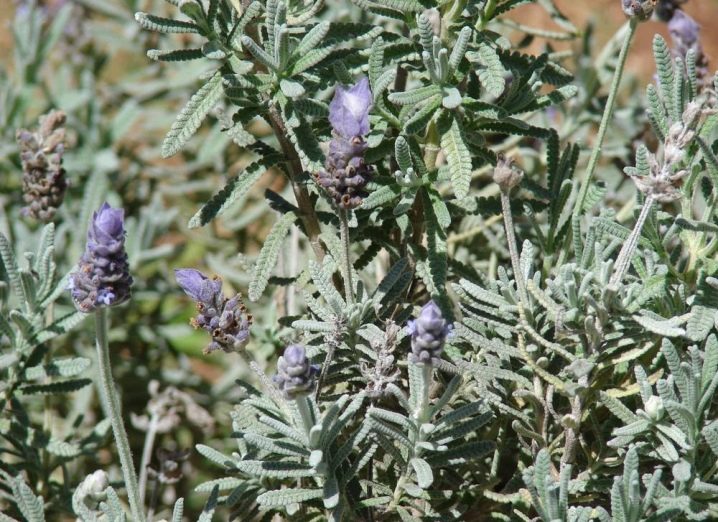
Broadleaf
Other names are French lavender or Pedunculata. Like other varieties of this plant, it has a pronounced aroma, but it is not as refined as, for example, in narrow-leaved lavender. It differs in that it begins to bloom earlier than other species - in April-May, and continues until early July; at the end of summer, a second flowering period may occur.
The upper part is a lilac-burgundy inflorescence with pink so-called bracts. It grows successfully in warm and even hot climates. Prefers dry, well-ventilated and water-permeable soil, gravel, lime-containing soil.
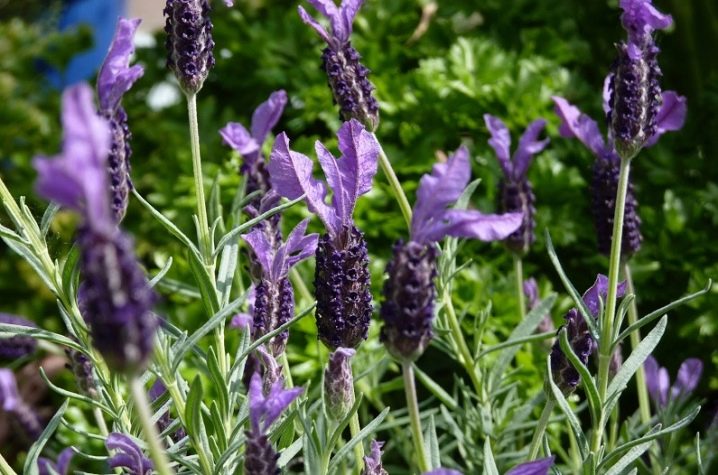
English
A flower of this species in height can be no more than 80 cm, and in diameter the abundance of inflorescences reaches a meter. To many specialists, English lavender resembles spikelets with its small flowers collected in a vertical row. The leaves are narrow, rather dense in structure, gray-green in color, with slight pubescence.
In comparison with the broad-leaved species, this plant is more frost-resistant, withstands temperatures of -25-39 ° C.
It tolerates drought well, but an abundance of water can even harm the root system, lead to decay. If all the conditions are observed, then the inflorescences of a blue and lilac shade, collected in 6-10 pieces at the tops of the stems, will delight the eye for a long time.
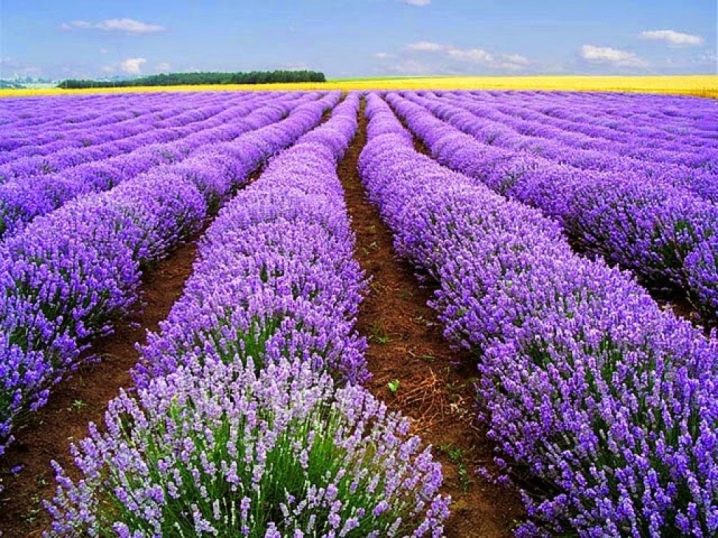
Multi-cut
The Mediterranean is considered the homeland of this perennial species, which means that due to the low frost resistance in Russia, it is grown exclusively as an annual. The openwork foliage is gray-green, spike-shaped flowers grow at a height of up to 60 cm, the color is considered traditional - blue-violet.
The flowering period depends on the climatic conditions in which the seeds were planted. The first buds begin to bloom after 1.5-2 months from the moment of planting in the ground. The flowering period can last until the first frost, and the plants are still beautiful and fragrant.
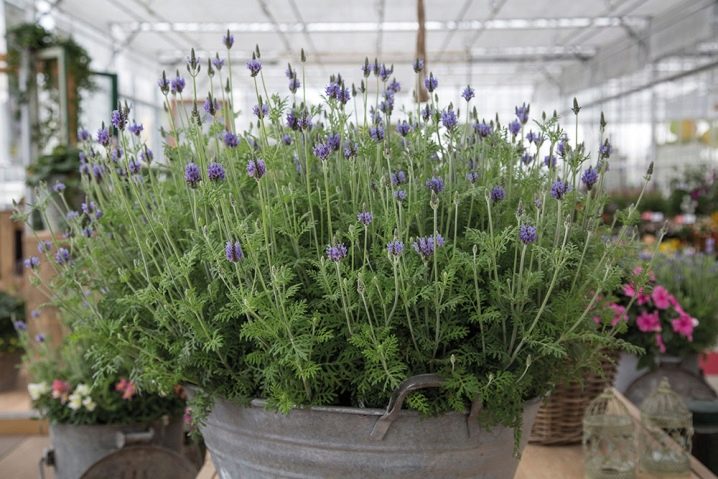
Narrow-leaved
Other names - English true, medicinal, spikelet, lavender angustifolia, Nana Alba, Sineva. This evergreen shrub is quite branchy. In height it can reach from 60 to 100 cm. If this species grows successfully, it forms a lush crown, the width of which can reach 1 meter. Leaves are sessile, linear, oblong, gray-green, curved edges.
Narrow-leaved lavender usually blooms from July to September. It is quite capable of surviving frosts down to -20 ° С, however, in the case of a winter with little snow, it requires shelter.
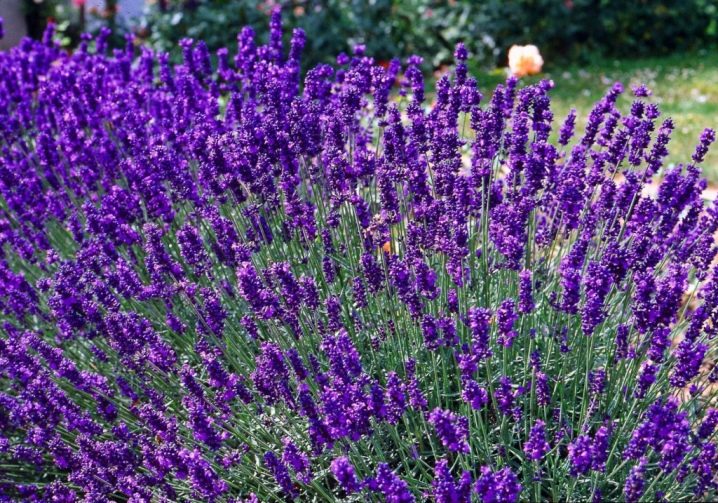
The flowers form loose or dense racemose inflorescences from 4 to 8 cm in length. There are shades of pink, blue and purple. In one place, this species can live up to 20 years, if the site is sunny, slightly elevated above ground level.

French
This variety is also called the inflorescence with "wings". Flowers of this variety look exactly like in the paintings of the artists of Mediterranean Provence. And what was the joy of breeders and sophisticated summer residents when such a beautiful and fragrant plant managed to "shelter" in the gardens of the not very warm Russian climate.
French lavender is not as popular as narrow-leaved, but it also wins the hearts of true connoisseurs. It has an unusual inflorescence, in the upper part of which you can find a kind of "wings".
It is important to follow the correct watering regime so that the soil for French lavender does not have time to dry out and is not too wet.
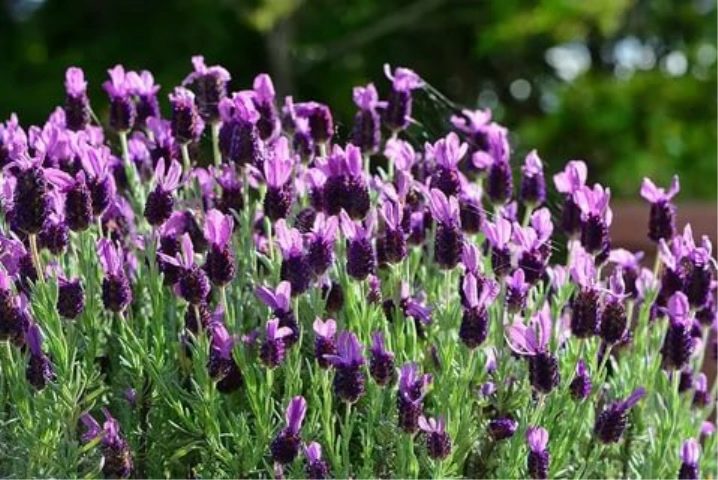
This variety, to the great regret of representatives of cold regions, is not frost-resistant, does not withstand temperatures below -7 ° C. The most successful and safe option for a plant is to grow it indoors, in boxes placed on terraces or on balconies, and, if necessary, brought home.
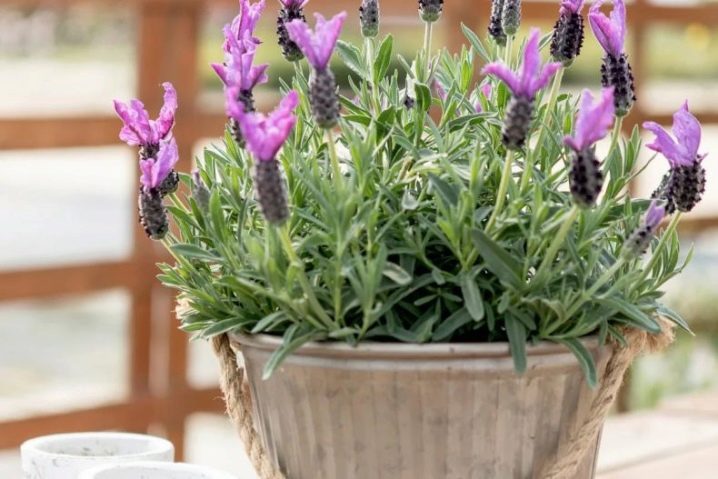
Stekhad
We call this lavender either French or Spanish, because in the wild it grows successfully in both of these countries. Leaves of representatives of this species most often reach from 1 to 4 cm in length. Flowers come in a wide variety of shades, but usually pinkish-purple.
In inflorescences of this species, unique "ears" grow upward and attract attention with a special smell, sweet, camphor. Flowering begins in March and ends in June. It is a relatively frost-resistant species and can withstand temperatures down to -5 ° C.
Each type of lavender is unique in its own way and is able to fascinate the beholder not only with the incredible beauty of lilac inflorescences, but also with a deep, rich aroma.
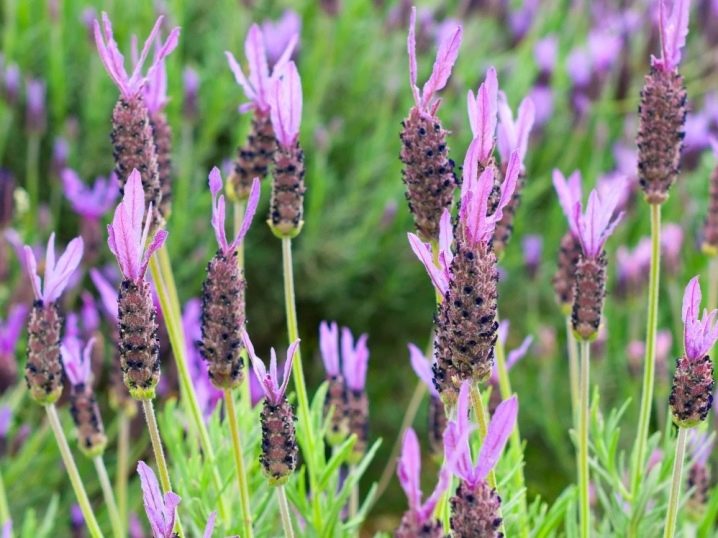
Hybrids
Hybrid lavender (also called lavender) is a hybrid of broad-leaved and narrow-leaved lavender, it is it that is grown on an industrial scale for supplies in cosmetic, perfumery and medical purposes.
One often hears the opinion that an essential oil made from lavandin is a fake. It's not like that at all. It is the same lavender oil, only a more frost-resistant, more productive plant is used for its production. Of course, the chemical composition of lavender oil and lavender oil is somewhat different, although many are of the opinion that the smell of the second is even brighter than that of the English species of this plant that we are used to.
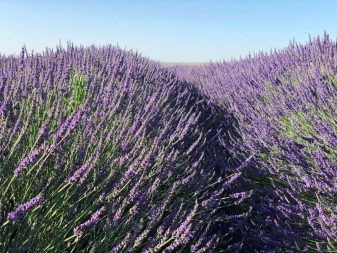

In addition to a more stable attitude to cold climates, hybrid lavender leads in comparison with English or French due to the fact that its flowers are easier to mechanized harvesting.
In addition, one hectare of hybrid field can get 3 times more oil than from narrow-leaved lavender. As for the appearance, here you can also find differences. Hybrid lavender flowers are larger, and their arrangement on the peduncle is more dense. Their color is brighter, and their aroma is more intense.
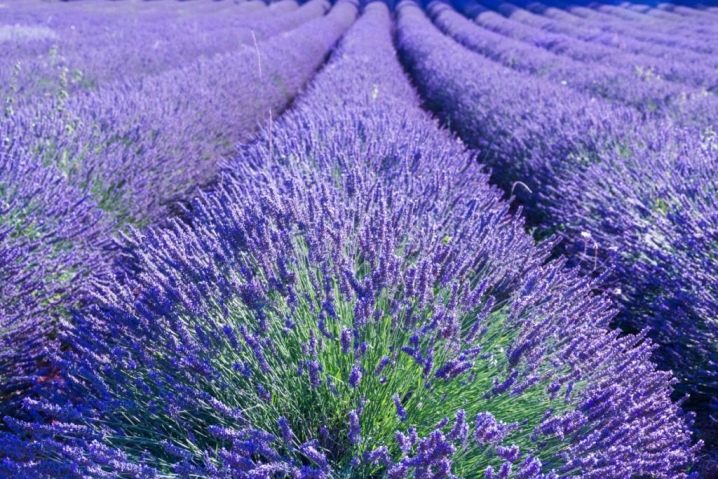
The number of inflorescences on one stem can reach 3. The stem is tall and erect, and the bush itself is compact, with a spherical crown.
These nuances must be taken into account if you are going to ennoble the garden and your choice fell on lavender. The hybrid will be the most successful decoration along the borders, in French-style flower beds with a well-defined geometry. Lavandin multiplies without problems by cuttings and layering, and the seeds are available only for industrial scale.
In terms of hybrid lavender varieties, Provence, Hidcote Giant and Grosso are considered the most successful. The English variety is prized for its compact shrub that will look good in miniature boxes. Crimean lavandin has large flowers and is spreading by itself, therefore it is suitable only for spacious gardens.

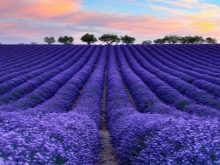
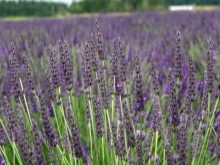
Which variety should you choose?
Unpretentious care, a delicate shade of inflorescences and a spicy, enchanting aroma will impress even the most sophisticated gardeners. Lavender will become an indisputable decoration of both a small flower bed in a summer cottage, and a pot with other flowers on the balcony.
Plants up to one meter in height will successfully fit into the equipped alpine slides or serve as an elegant division of the flower garden into zones: in the warm season in the form of delicate flowers, and in winter (do not forget that the lavender is frost-resistant) - with gray-green leaves.
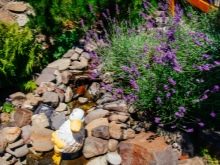

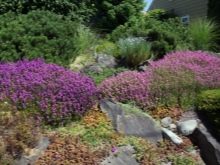
If, on your site, the flower beds have already been formed, but you still want to enjoy the spicy aroma, then the purchase of pots and tubs that can be hung under the windows or in the gazebo would be an excellent solution.
Below are several varieties that are most suitable for the implementation of the plans.
French lavender "Bandera Pink". Flowers of a burgundy-purple hue have pink "ears", which in combination looks very harmonious. Blooms in July and pleases the eye until the end of August. Dry sunny places, areas of central Russia are suitable for growing this variety.
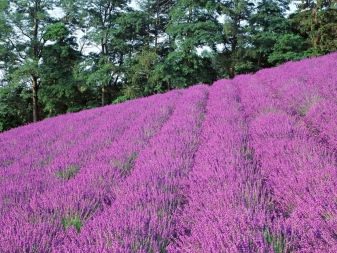

French lavender "Bandera Purple Violet". The flowers have a pronounced purple hue, and the "ears" are pink-purple. The variety is ideal for home cultivation and also looks great in bouquets, both fresh and dry.
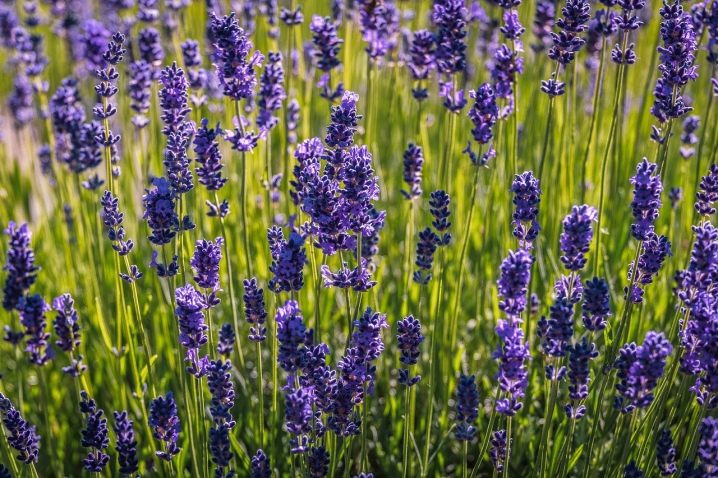
English lavender "Platinum Blond". A variety of narrow-leaved lavender, a compact shrub with violet-blue flowers. Leaves of a gray-green hue with a creamy white border, for which the variety got its name. In fact, it belongs to the winter-hardy, therefore it can be suitable for the regions of the Moscow region, but it is important to consider that in the cold it requires shelter.
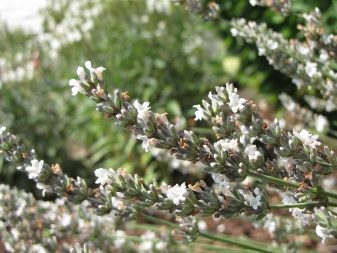
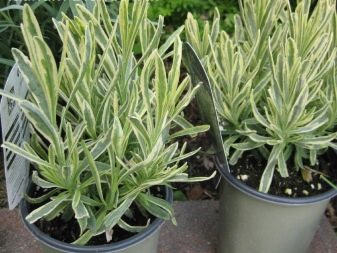
English lavender "Silver Mist". The leaves of this variety are silvery, and the flowers are bright purple, they have a particularly pleasant aroma.Such lavender blooms throughout the summer, and tolerates winter quite staunchly, making it quite suitable for growing in Siberia.
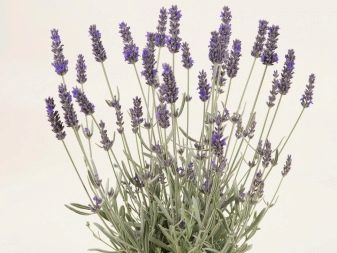

An incredibly beautiful plant originated in the Mediterranean regions, but was able to take root in our country, in the harsh climatic conditions. This means that you should not miss the opportunity to enjoy its appearance, enjoy the aroma and use it for medicinal purposes.
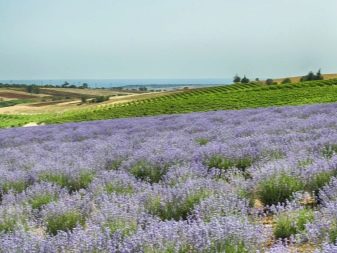








































































































The comment was sent successfully.